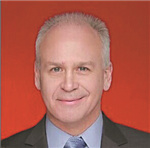
I got some "postcards" recently from the distant past.
What arrived at my door in Beijing, not by post, but by parcel courier, was a hardbound volume in smart regal red titled Sidelights on Peking Life — a faithful reprint by the company Beijing Postcards of the 1927 book by Robert W.Swallow.
Swallow, the son of missionaries, portrays, via colorful descriptions, wonderful photos and fascinating anecdotes, the people and activities that made Beijing tick and buzz in the early days of the 20th century.

The book immediately reminded me of my extensive travels throughout the United States as a child, when my family stopped frequently at points of interest and purchased postcards. These were meant, as their name suggests, to be mailed to relatives or friends so you could share your experience and pen a few descriptive lines intended to make the recipient wish that they, too, had been there.
But rather than mailing them to anyone, I kept the postcards — ranging from those bought at the 1964 New York World's Fair, to those from (former US president Abraham) Lincoln's Tomb. My collection served to remind me, through the mists of passing time, of where I had been and to prompt memories, via the photo or photos on the front, of the moments that joined me forever to these unique places on Earth.
In essence, that is what author Swallow has done in his fine book, through details and photographs. And what is most impressive is how Beijing, a city that continually modernizes while keeping one foot solidly in its ancient past, still exhibits many of the traits conveyed by Swallow's descriptions.
Recently, for instance, I was chatting with a friend near my Beijing apartment when a street vendor, peddling either window screens or a knife-sharpening service, made a distinctive and very loud sound via a handheld clapper of various small steel plates that struck each other as he made rapid motions with his hand.
Swallow describes, nearly 100 years ago, an identical scene.
In Chapter 3, "Street Vendors", the author writes of the clamorous ways that such sellers drew the attention of would-be customers.
"The sharpeners of knives use different methods, according to their individual fancies. Some carry four oblong iron plates, which are fastened one below the other, and their particular noise is made by giving the plates an upward jerk."
Perhaps the vendor I heard that day had inherited his clapper from his grandfather or great-grandfather, who likewise plied this trade.
Rich insights on Chinese customs and culture, and glimpses of life in the city's maze of characteristic residential and commercial alleys known as hutong, also are to be found in the 135 pages of Sidelights, in such chapters as "Feasts and Restaurants", "Actors and the Theatre", and "Tales of the Spirit World".
"For smoothing over difficulties and clearing away doubts and misunderstandings, there is nothing comparable to a Chinese feast," Swallow writes. "No matter how hard a bargain may have been driven, or how heated the argument may have proved, there is nothing but sunshine as soon as the company gets seated at the round table, ready to do full justice to the good things that are due to come."
In fact, Swallow adds, in Beijing the feast "reigns supreme, for it is the alpha and omega of political intrigue".
Regarding a popular central Beijing attraction known today to Chinese and foreigners alike, Swallow, in a section about street names, writes that "here and there (we) get a glimpse of the changes that time has brought about. For instance, the Chinese name for Morrison Street is Wangfujing (Dajie), the 'big street with the well in the garden of the prince'".
"This at once takes us back to the days when princes were among the great ones in the land," Swallow writes in 1927, "and we can visualize the stately figures strolling round the beautiful garden, while busy hands drew up water from the well, which still remains undisturbed by the vicissitudes of time, though it is neglected and out of use."
I have often marveled, when wandering in Wangfujing, how the marker in the sidewalk where the well once stood is rarely noticed now by the thousands walking past on a given (pre-COVID) summer day.
But for the observant resident or tourist, there is much to remind us that Beijing, a city transformed time and again by history and circumstances, retains to this day a wealth of clues to the wonders of yesteryear.
For those who want to seek out the places in the sprawling capital where past and present intersect, Sidelights on Peking Life offers an amusing road map.